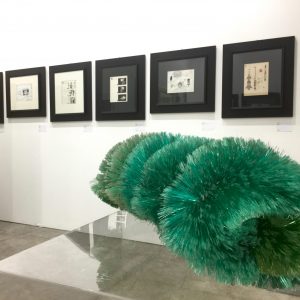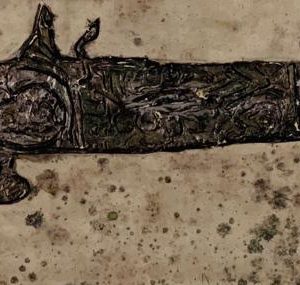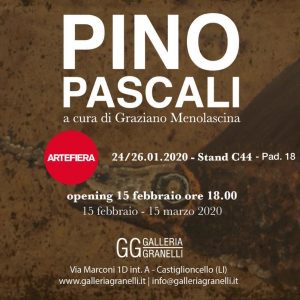Pino Pascali – 2020
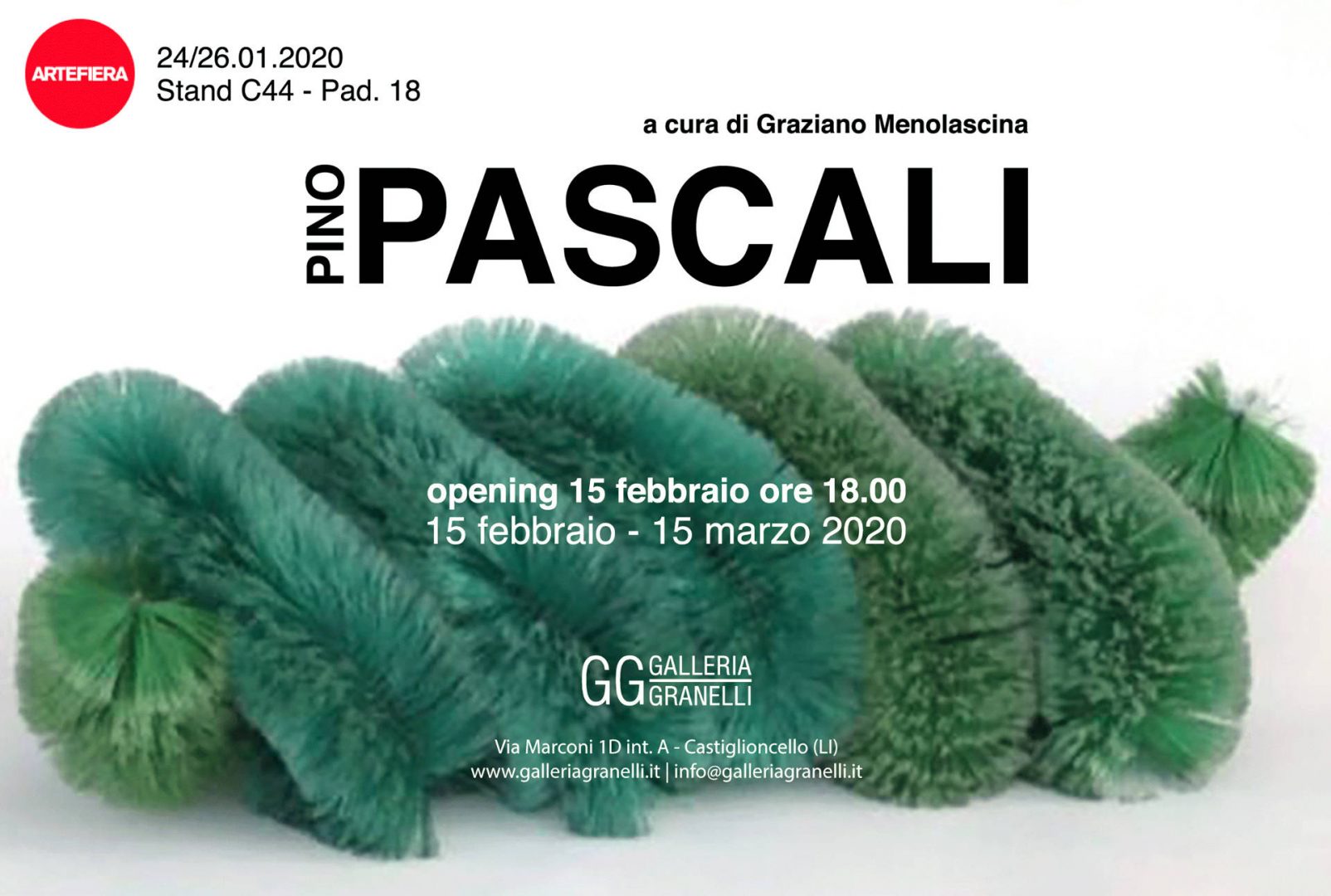
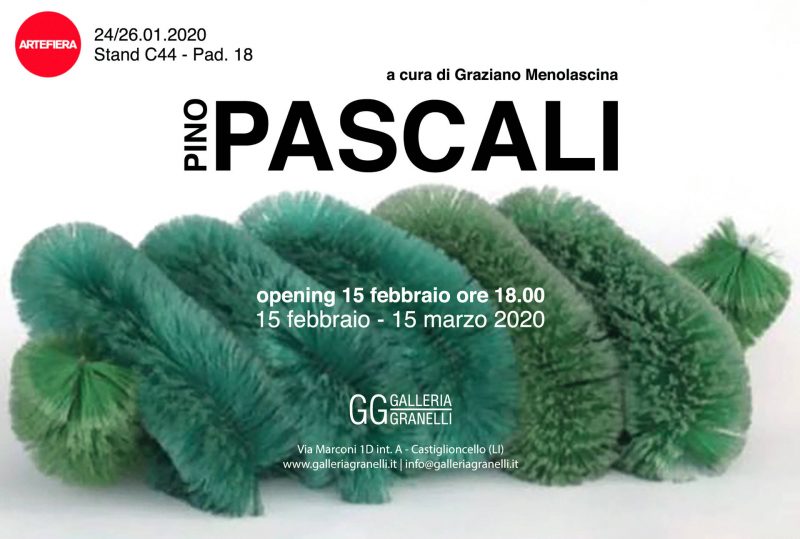
Pino Pascali edited by Graziano Menolascina
in Bologna at Artefiera in Stand C44 – Hall 18 from 24 to 26 January 2020
Opening at Galleria Granelli February 15 18:00
February 15 – March 15 2020
Pino Pascali has crossed the history of Italian art as a dazzling meteor.
Born in Bari in 1935 and died at the age of thirty-three in a motorcycle accident, he is considered with Boetti and Manzoni as one of the most innovative avant-garde artists of the Italian post-war period.
Despite his lightning career, he already obtained almost unanimous consent in life for the disruptive originality of his talent.
In 1968, a few months before his death, the “Biennale di Venezia” dedicated a personal room to him and posthumous acknowledgments did not take long: international prizes and exhibitions in the most prestigious contemporary art museums followed one another.
Without his embankments his imagination, ready for manipulations and transformations with assemblages of objects of daily use, of things that came to hand.
After attending the art school in Naples which had been a mere academic training for him, it was with the arrival in Rome in 1955-56 that Pascali, who entered the Academy in the school of scenography held by Toti Scialoja, began to become aware of himself and of the direction in which he could launch all his technical possibilities.
He began, like Warhol and other artists who entered the history of art, in advertising scenography and animated cinema, first with Incom, then with Saraceni – Lodolo Cinematografica, a partnership that lasted until 1967, and finally for four years at the Center of production RAITV, as set designer assistant of “Studio One”. The many drawings, sketches, sketches for Carosello and television themes still bear witness to this.
Pino Pascali never abandoned the world of “carousels”, the one concerning advertising, where he expressed himself in the most instinctive, fast, authentic way, where he poured all the playful and cheerful moods of his imagination: delicious inventions and even authentic masterpieces, rich in ideas that then, in different forms, emerge in his activity as an exhibiting artist.
So much so that today their critical quotations are constantly rising. As Claudia Lodolo wrote, “Pino Pascali’s advertising work between 1958 and 1968 – unfortunately still little known to the general public – has gradually gained a place of high interest and wide consideration in the art world, so much to define them, like his other pictorial or sculptural works, creations of unquestionable taste and creative capacity “.
In 1964 at the Venice Biennale the American Pop Art landed, Pascali absorbed the climate, like other artists (Franco Angeli, Schifano, Festa) and with his genius reworked themes and subjects in a very personal and Italian version.
Between 1964 and 1965, Pascali realizes works that have the female body as subject, including:
- “Tribute to Billy Holiday” (GAM Turin);
- “La Gravida / Maternità” 1964 (MACRO Rome);
- “Red lips” 1964 (Nantes Fine Arts Museum);
- “Foreground lips” 1965 (GNAM Roma);
- “Torso di negra” 1964/65 (GNAM ROMA).
The works mentioned have a clear influence of American pop art, but enriched by that sensuality of a clear Mediterranean origin.
Pascali did not want to go directly into the artistic field but to wait for the favorable opportunity; Although in fact, in his studio Ileana Sonnabend and Pierre Restany had already been led by Plinio De Martiis, it was only in 1965 that he made his first exhibition at the “La Tartaruga” gallery with large plastic pieces.
A year later Pascali found in Fabio Sargentini’s “Attic”, the gallery that was to declare its definitive affirmation.
The great exhibitions held at the Attic immediately interested also Alexandre Jolas: just on the eve of the exhibition, Jolas had his big exhibition in New York (after those in Milan and Paris).
In 1966 and 1967 Pino Pascali created a cycle of works dedicated to animals, but he no longer sought a verisimilitude with reality as it had happened with weapons; materials such as wood or canvas are used, but also industrial materials, such as acrylic brushes to create “Bristle brooms”, or synthetic plush for “the blue widow”.
The artist in his imagination recreates a ‘Noah’s Ark magnified by a child’s eye, so we will find giant animals but light as clouds.
In 1967 and 1968 Pascali increasingly tends to invade the space, to occupy it with works that take on the dimensions of real installations.
The materials used are primary elements such as water, the earth: here is accentuated its Mediterranean culture, Nature is seen as the Deep and Benign Mother dispensing life and eroticism.
From here the famous ones:
- “Plowed fields”
- “Irrigation channels”
- “1 mc of land”
- “32 square meters of sea”
- “Puddles”
From June to October 1968 he was invited for a solo show at the XXXlV Venice Biennale presented by Palma Bucarelli, director of the National Gallery of Modern Art.
From bricoleur he had created with the most diverse tools those weapons that he exhibited in Turin at the Sperone gallery in January 1966 and that were not without influences on the birth of poor art: he reconstructed cannons, bombs, machine guns, almost in real scale but falsely threatening because unusable, it is his way of making fun of the war, of playing with toy soldiers.
Large sculptures in the shape of toys that transport children into the world of art, games, irony, mockery, thus freeing form from content, no longer disturbing objects that the civil conscience refuses or delegates to “warlords” .
The artist himself underlines the play and the ambiguity of the operation by being portrayed disguised as a soldier with a sullen and serious look but with obvious and subtle irony, to emphasize that it is all fake, that everything is play, even in artPino Pascali, died prematurely in Rome in 1968, due to a motorcycle accident, his great passion, at the height of his career, while some works were on display at the XXXIV Venice Biennale.
After his death, when the show was still open, he was awarded the International Sculpture Award.
Genuinely creative sculptor, set designer, performer and creative artist, Pascali managed to give a critical and original answer to all those trends that came from America such as Pop Art and Minimal Art and embraced Body Art, Arte Povera and the conceptual art of the 70s with the naturalness and simplicity of an exceptional talent.
Pino Pascali’s works are preserved in the major museums of the world:
- MoMA (New York)
- Tate Modern (London)
- Center George Pompidou (Paris)
- MUMOK (Vienna)
- Museum of Modern Art in Osaka, GNAM (Rome)
In the 2015 Venice Biennale, a wing of the International Pavilion was dedicated to Pino Pascali.


